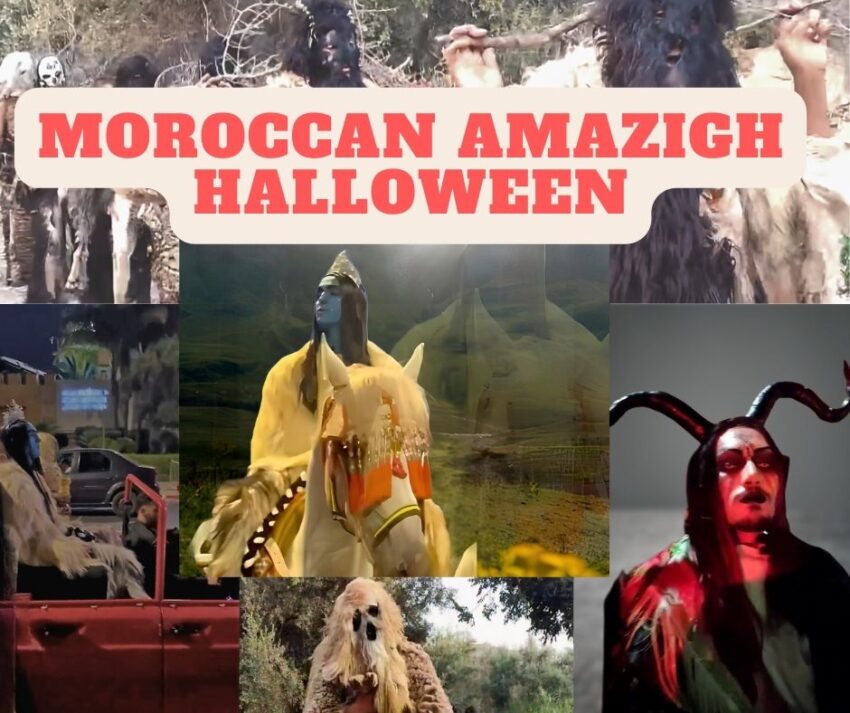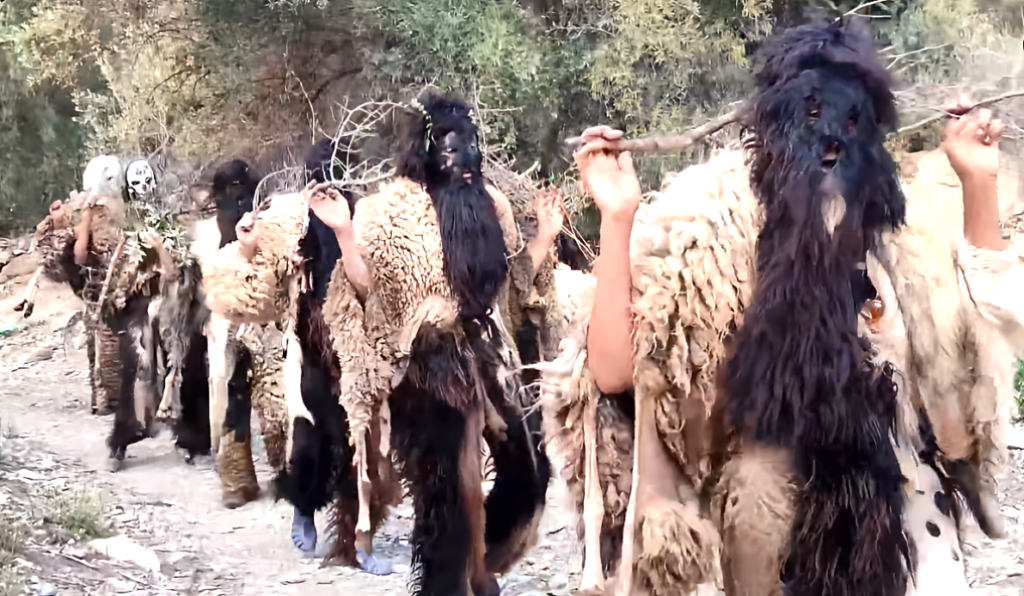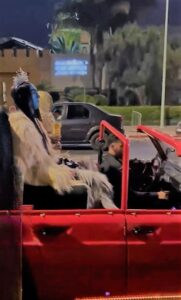Bilmawn, Bu-jelloud, Hrrma, and Bu-lbtayen all relate to the same ritual known as “Amazigh Halloween,” which is practiced in different parts of Morocco, especially Agadir and regions. This popular Amazigh masquerade practice occurs after Eid El Kebir (also known as Tafaska in the Amazigh language).
During this ritual, a group of people dress up in goat or sheep hide disguises. They either apply charcoal face paint or wear masks as they engage in theatrical acts that bring pleasure and laughter to the city’s streets.
These participants, along by a group of other masked entertainers known as “Bu-ilmawn,” prowl the neighborhood streets, going from door to house. Their mission is to gather money, sheep and goat skins from the locals. This practice is frequently accompanied by the presence of popular musicians, which contribute to the celebratory mood, bringing joy and pleasure to the audience. However, the presence of the Bu-ilmawn, with their masks and costumes, may cause terror and anxiety, particularly in children and women.
The Amazigh Halloween ritual is strongly ingrained in Moroccan culture, symbolized by Bilmawn, Bu-jelloud, Hrrma, or Bu-lbtayen. It highlights the Amazigh people’s distinct cultural identity and their Eid El Kebir festival. While the celebration is similar to Halloween, it has its own specific elements that represent the local community’s customs and beliefs.
What is Muslim’s opinion about Moroccan Amazigh Halloween
The controversy over whether the Amazigh Halloween ritual is permissible underscores the ongoing discussion within Muslim communities about the junction of cultural traditions and religious responsibilities. Depending on their grasp of Islamic teachings, cultural settings, and personal interpretations, different scholars and individuals may hold opposing views. in fact, some people don’t support this festival, but for others, it showcases creativity and artistic expression while contributing to Morocco’s cultural diversity and possibly maintaining historical connections.
Blue skin Avatar in the Amazigh Bujlood Halloween festival 2023
The inclusion of an Avatar movie character with blue skin in the Amazigh Halloween festival reflects the festival’s ability to adapt and evolve with changing times and influences. It demonstrates the festival’s openness to incorporating elements from contemporary popular culture, making it relatable and engaging for newer generations. This fusion of traditional and modern elements adds a fresh and exciting dimension to the celebration, bridging the gap between traditional practices and contemporary interests.
The Amazigh Halloween custom in Morocco, also known as Bilmawn, Bu-jelloud, Hrrma, or Bu-lbtayen, is an important element of the country’s cultural fabric. Individuals can participate in masquerade performances, donning animal skins or masks, and spreading pleasure across the community. While it is similar to Halloween in some ways, it is a distinct manifestation of Amazigh culture, strongly linked to the Eid El Kebir festival.


